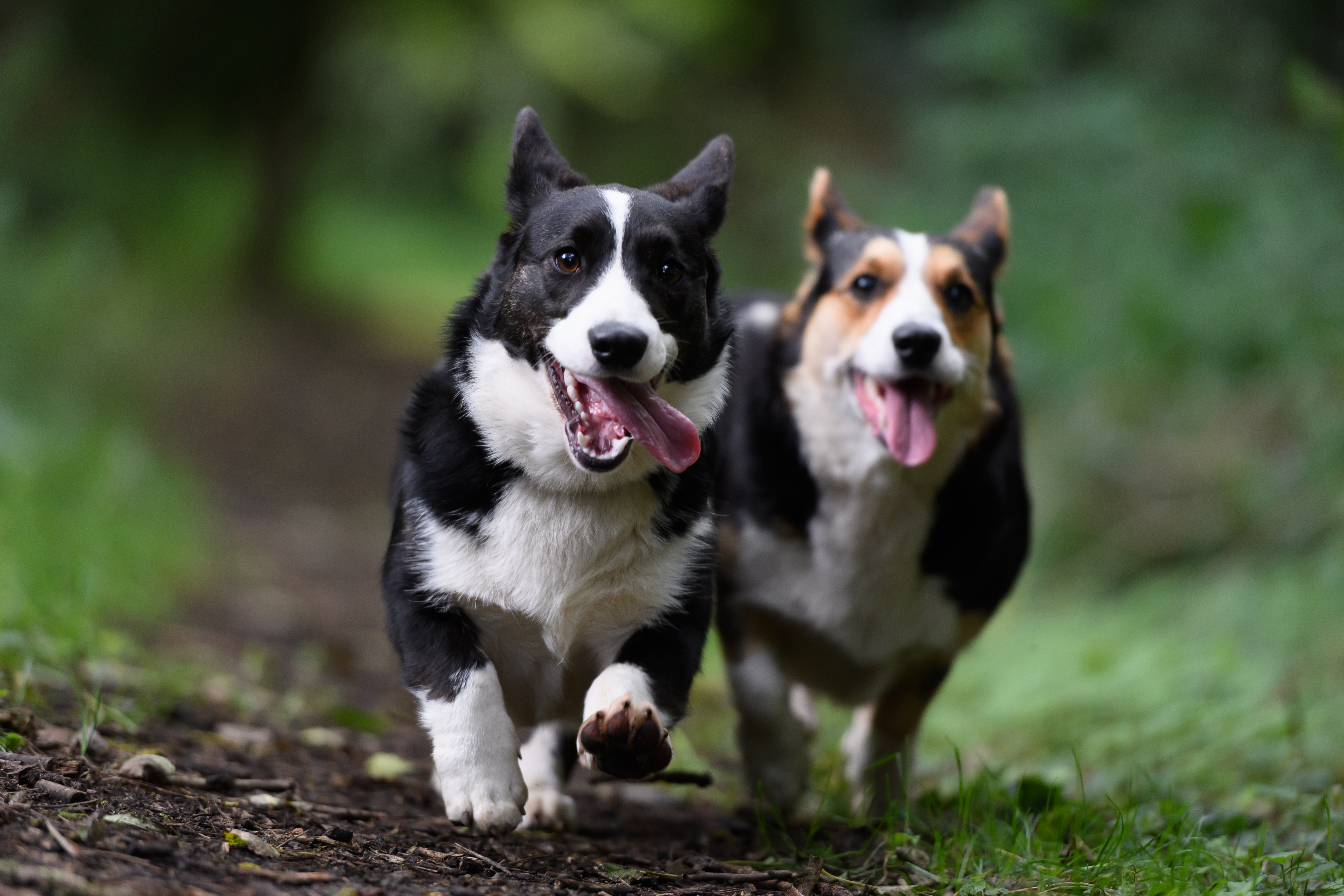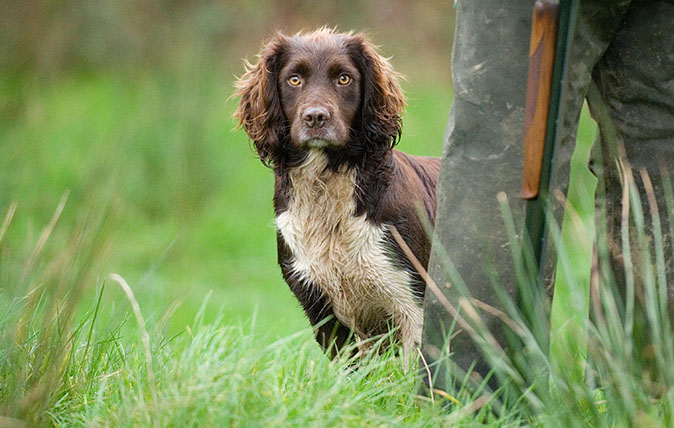Cardigan Welsh Corgis: 'Smashing little dogs’ which deserve as much recognition as their Pembroke cousins
They’re not as well known as their Pembroke cousins that are so beloved by The Queen, but Cardigan Welsh corgis are small dogs with a big attitude, finds Matthew Dennison.

Visitors to the epilepsy ward of one British hospital may find themselves in for a surprise. Among regular attendees at the clinic is a Cardigan Welsh corgi called Bella. As an assistance dog, she combines the roles of faithful companion and early-warning device for her epileptic owner. Indeed, so acute is Bella’s sensitivity to her handler’s health that she’s able to give her a 30-minute warning of a seizure.
To Bella’s breeder, Brenda Piears, the dog’s prowess is easily explained. ‘Cardigans have an ability to empathise,’ she divulges. ‘They’re quick learners and very intelligent.’
They are also, as anyone who has ever seen one will vouch, handsome little dogs, sturdily four square on their short legs, with a long back and a tail like a fox’s brush, usually tipped with white. Their double coat shows a variety of colourings, from the red more often associated with their cousins, Pembroke corgis – until last year, the favourite pet of The Queen – to sable, brindle and blue merle, the colour that Mrs Piears chiefly breeds and shows.
Cardigans’ coats are liberally marked with white, including a distinctive white blaze on the head and often on the neck, chest and legs.

However, the striking good looks, intelligence and small size that make them ideally suited to being a modern pet have done little to popularise this native breed, one of the oldest in the British Isles. Although the Cardigan Welsh corgi enjoys a healthy following overseas, especially in the USA, at home, it’s among our rarest breeds.
Last year, only 147 Cardigan Welsh corgi puppies were registered with the Kennel Club. That this represents a marked improvement on figures a decade ago, when fewer than 50 puppies were registered in one year, doesn’t diminish the challenge facing the breed in safeguarding its numbers and its homegrown breeding stock.
However, chairman of the Cardigan Welsh Corgi Association Karen Hewitt discerns grounds for quiet optimism. Mrs Hewitt, who this year judged the breed at Crufts, is cheered by the interest Cardigans invariably attract at Crufts’ breed showcase Discover Dogs and the extent to which this interest currently translates into puppy sales and new owners.
Exquisite houses, the beauty of Nature, and how to get the most from your life, straight to your inbox.

‘My last litter sold in no time,’ she reveals. For Mrs Hewitt, this is confirmation of the high regard in which she’s held Cardigans for more than 30 years. ‘They’re brilliant – a big dog on short legs, great with children, one-family rather than one-person dogs, clever and often quite laid back.’
Why, then, is their popularity ranking in the doldrums? The Cardigan Welsh corgi has never enjoyed the iconic status of the Pembroke Welsh corgi, to which it’s closely related. This is partly attributable to the Pembroke’s championing by the world’s best-known dog owner, The Queen.
Until 2018, when the last of her Pembroke corgis died, The Queen had owned 14 generations of the red-and-white-coated Welsh herding dogs, as familiar a feature at palace receptions as on Her Majesty’s walks in Windsor Great Park. For many people, ‘corgi’ means a Pembroke corgi and the Cardigan has, correspondingly, been overlooked.

However, the breed deserves our attention. Longer-backed and longer-tailed than Pembrokes – their alternative Welsh name, Ci Llatharid or ‘yard dog’, came about because a typical Cardigan measures a Welsh yard from nose to tail tip – they share their sister breed’s best qualities: loyalty, alertness, intelligence and an instinct to protect their owners.
‘They’re a guarding breed,’ points out Mrs Hewitt. ‘They do like to protect and they have an unusually big bark, deeper than that of Pembrokes.’
They also enjoy robust health, are unfussy eaters and, with their double coats that keep off the rain, are able to accompany their owners outdoors in the worst British weather. That the Cardigan is seasonally a heavy moulter and requires regular grooming is, owners agree, a small price to pay for the joy they bring.
Mrs Hewitt remembers the first champion Cardigan she bred with particular fondness: ‘Ted was a dream dog and came as close to having a sense of humour as any dog can. When my husband took him to work, he quickly learned that the pub was part of Jonathan’s lunchtime. One day, Ted disappeared and was discovered waiting outside the pub.’
She also commends the breed as a practical choice for many families. ‘For me, they fit in with everything I want to do. They will walk for miles, but don’t tear the house apart if they’re not exercised excessively.’ Mrs Hewitt’s current dog, 2½-year-old Carrie, is happy to curl up under the seat in her husband’s narrowboat.
Her newest dog is Carrie’s brindle-point tricolour daughter, Sally, still a puppy.

As a breeder, Mrs Hewitt favours red and brindle Cardigans, partly on account of their eye colour: ‘I like the warm, dark expression.’
For Mrs Piears, the decision to buy her first Cardigan Welsh corgi in 1995 was a sort of homecoming. ‘I was born and bred in Cardiganshire,’ she explains. ‘These dogs originated in the same part of the world as me.’
Today, Mrs Piears has three dogs: 13-year-old blue-merle Moli, six-year-old blue-merle Lili and Lili’s son, Daio, four, a red-point tricolour. They are, she admits, ‘a little tribe’ and she considers Moli and Lili’s standoffishness with other dogs to be less characteristic of the breed than Daio’s happy gregariousness.

Although both Mrs Hewitt and Mrs Piears came to Cardigans after showing other breeds – German shepherds and rough collies, respectively – neither has ever regretted the switch. What’s more, they’ve passed on their enthusiasm.
‘I’m sure my daughter will have a Cardigan when she can,’ enthuses Mrs Hewitt, ‘and my very young grandson was really keen to see more Cardigans at Crufts this year.’
In these families, at least, the Cardigans’ future is assured – and rightly so. After three decades, Mrs Hewitt describes them affectionately as ‘smashing little dogs’.

Credit: Sarah Farnsworth/Country Life
Fox-red labradors: Why red is the new black
From russet red to ever-so-slightly blushed, the fox-red is growing in popularity across the country sporting world. However, the gundog

Tibetan terriers: Friend to the famous, lovably lively and perhaps the Kennel Club's best-kept secret
They have a starry following, but characterful Tibetan terriers are still a well-kept secret. Emma Hughes meets the best dog

Credit: Alamy
Cocker spaniel versus springer spaniel: What owners need to know
Which is the more popular spaniel, the springer or the cocker? Shooting Times's David Tomlinson weighs up the pros and

Which breed makes the best gundog? The pros and cons of labradors, spaniels, terriers and more
Whether you own labradors, springers, cockers or a mix of all three, debate over which gundog is best has raged